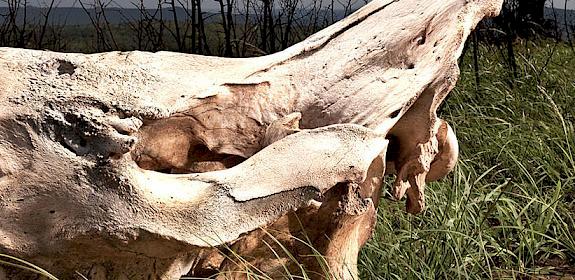Officials receive CITES enforcement training relevant to “One belt, One Road Initiative”
Tianshui, Gansu, China, July 2016—Around 50 enforcement officials, including representatives from the Forest Police, Customs, State Administration of Industry and Commerce and Forestry Department in Ningxia, Qinghai, Gansu and Yunnan provinces attended a training event on the Convention on international trade in endangered species of wild fauna and flora (CITES) last month.
The event was organized by the Shanxi Branch of China’s CITES Management Authority (CITES MA) in Gansu province in co-operation with TRAFFIC and focused on the influence of China on wildlife trade and combating wildlife crimes.
Ningxia, Qinghai and Gansu all lie along the new “Silk Road Economic Belt”, while Yunnan is an important hub in the new “Maritime Silk Road”. Together they form the “One Belt, One Road initiative”, which aims to boost connectivity and co-operation between China and the rest of Eurasia.
The economic development will bring more legal wildlife trade, with the likelihood of an increase in wildlife smuggling and illegal trade too, presenting new enforcement challenges.
Mr Zhang Shanning, Director of Enforcement and Training with China’s CITES MA spoke about some of the latest developments with international trade in threatened species and the high-level political attention the issue was currently receiving in the country.
Xiao Yu, a Programme Officer with TRAFFIC presented recent market monitoring findings, after which Ms Jia Yongyi, Director of the Shanxi Branch of China’s CITES MA commented:
“All enforcement departments need to take TRAFFIC’s market survey results seriously: their reliable information can help the government with implementation of CITES regulations in China.”
”The One Belt, One Road initiative is a crucial part of the National Strategy, which will promote international trade in many fields,” said Zhou Fei, Head of TRAFFIC’s China office.
“TRAFFIC, as an international organization, needs to investigate and study the influence of the trade in wildlife as this Strategy unfolds, to ensure there is sustainable development and avoid any negative impacts on our natural resources.”
Shanxi Institute of Zoology is currently carrying out research into the impacts of the One Belt, One Road initiative, the results of which will be released at the end of 2016.
WWF UK is thanked for their generous support for TRAFFIC’s work facilitating China’s enforcement departments in implementation of CITES regulations.
Convention on International Trade in Endangered Species of Wild Fauna and Flora (CITES)

The Convention on International Trade in Endangered Species of Wild Fauna and Flora, is an international agreement between governments that aims to ensure that international trade in specimens of wild animals and plants does not threaten their survival. Find out more here.




